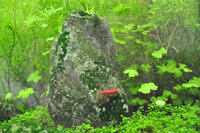As you say, UV is used, in ponds, for example to control algae, which could be very appropriate.
Some of the reported triggers of an outbreak of BBA (e.g. sensitivity to blue / UV light) are also similar to the factors that inhibit autotrophic bacteria from functioning.
As well as killing the algae, it may also be killing the autotrophic (nitrifying) bacteria in the water column, preventing it from colonising new sites.
Also, the autotrophic bacteria require a lot of oxygen to convert ammonia to nitrates (75 molecules of O2 are required to create one molecule of organic carbon C5H7O2N).
My argument is that ammonia / urea are compounds that BBA requires to grow / reproduce. Therefore, you need to protect the autotrophic bacteria to keep it converting ammonia / urea to nitrite / nitrate. To do this, you should ensure the autotrophic bacteria has a good supply of oxygen and avoid other inhibiting factors (e.g. UV lights possibly).
The following is why I think there is a link between ammonia / urea plus vitamin B12 and BBA reproduction.
In the paper "Influence of vitamin B auxotrophy on nitrogen metabolism in eukaryotic phytoplankton" by Bertrand and Allen (
http://journal.frontiersin.org/article/10.3389/fmicb.2012.00375/full), they include the following diagram:

The Urea and TCA (The Citric Acid) cycles are common pathways for a lot of organisms.
I think this diagram shows:
- how ammonia and urea feed into the urea cycle, which begins the overall process
- where vitamin B12 and ammonia are required to complete the process
- that spermidine is eventually produced by this process, which feeds into the production of polyamines (e.g. Spermine).
On Wikipedia, in the entry for Spermidine, it states (
https://en.m.wikipedia.org/wiki/Spermidine):
Spermidine is synthesized from
putrescine and is a precursor of
spermine.
On Wikipedia, in the entry for Red Algae, under the section for Fetilisation it states that when fertilisation takes place:
The polyamine spermine is produced, which triggers carpospore production.
Wikipedia defines:
A
carpospore is a
diploidspore produced by
red algae. After fertilization, the alga's carpogonium subdivides into carpospores, and generally the largest type of spore (larger than
bispores, which are larger again than
tetraspores).
[1] The wall of the carpogonium then breaks down, releasing the spores into the environment.
[2]
My argument is that an increase in ammonia / urea plus vitamin B12 feeds into the process that eventually leads to the BBA reproducing.





